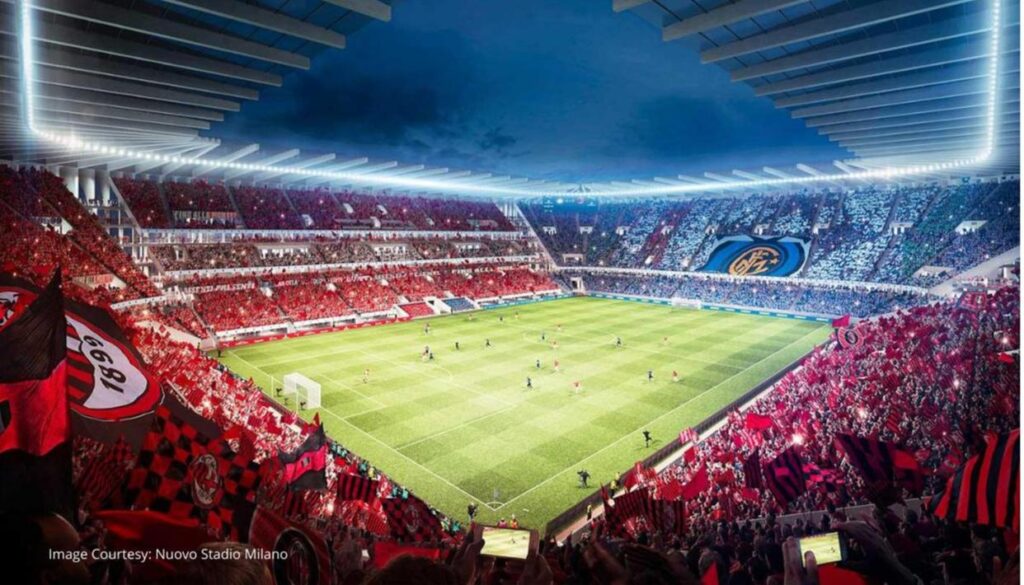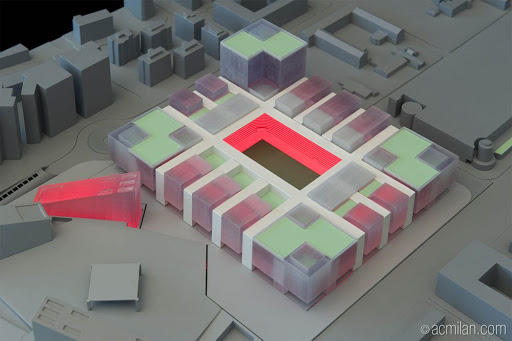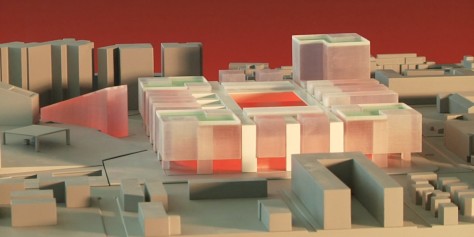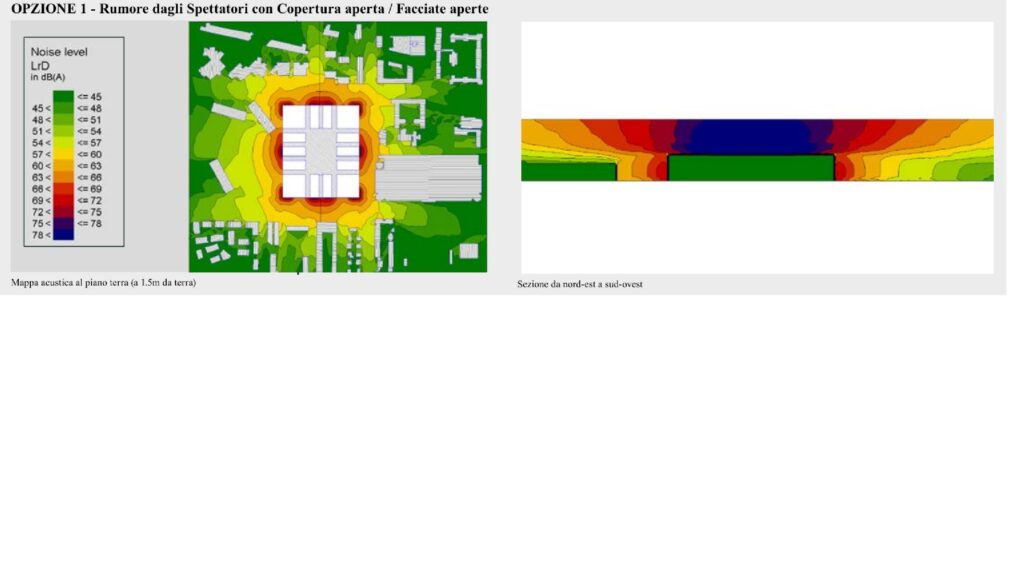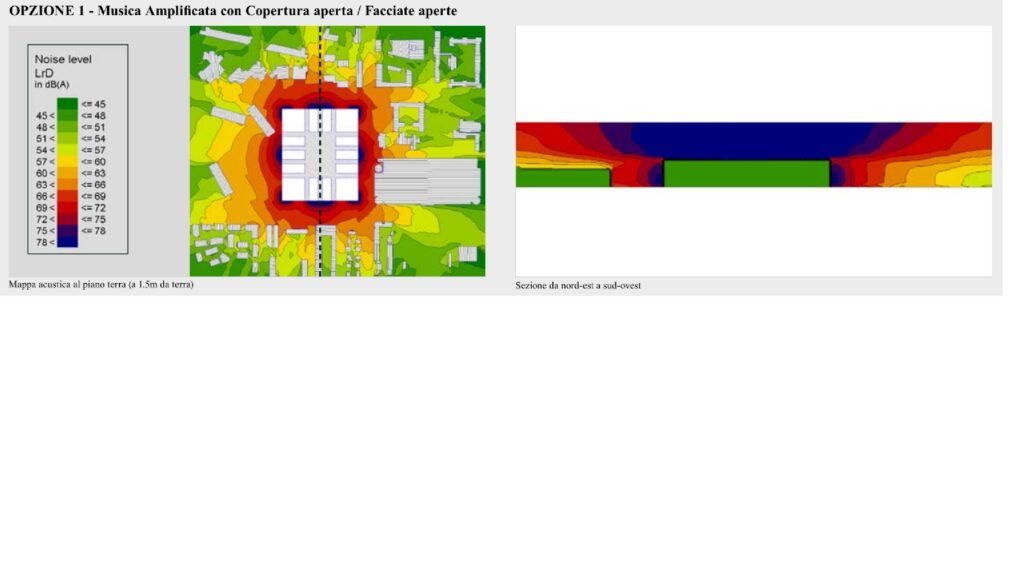AC Milan Stadium, Italy
Architects: Arup Associates Milano
Client: AC Milan
Services: Feasibility study
Location: Milan, Italy
With the idea to redevelop a plot of land in the city’s Portobello area, the new AC Milan home Stadium would have been erected in an area adjacent to Buildings 1-2 of Fieramilanocity, involving the entire precint between Teodorio, Scarampo, Aldo Rossi and Gattamelata roads, which includes Fondazione Fiera area, Citroen area and AdP Portello Area. The new stadium would seat 48,000 people and would have given the opportunity to relocate the football team to a home stadium from the currently shared Giuseppe Meazza Stadium, commonly known as the San Siro, with its rivals Inter football club. In statement on its website, the AC Milan club said the plans were inspired by the Emirates Stadium in London and the stadiums of Basel, Bilbao and Neuchatel, but added that the structure would be "a very Milanese stadium, unique in the world". The design shows a football pitch sunken into the middle of a cluster of glazed blocks on a red flood-lit plaza. Some blocks feature rooftop gardens while others show viewing terraces and stairwells. The stadium also features a removable roof that could open and close to help controlling noise from spectators during matches or music events. A glass tower block with an L-shaped plan rises from one corner of the complex. An on-site hotel, sports college, restaurants, public gardens and children's playground would provide services for spectators and visiting teams. VIP facilities would feature lounges and private viewing terraces with views of the pitch, socialising areas and of the route between the changing rooms and the pitch. For an engineering point of view the project has been developed with a fully holistic and integrated approach where all the design components have been carefully balanced around the spectator’s experience. In light of the location of the new stadium, right in the middle of Milan city with residential blocks overlooking the stadium, the acoustic feasibility study focussed on the assessment of noise egress to the surroundings both during football matches and concerts, taking into account to either close or open the stadium roof and the side façade openings, which are the ground floor entrances and the third floor openings.



